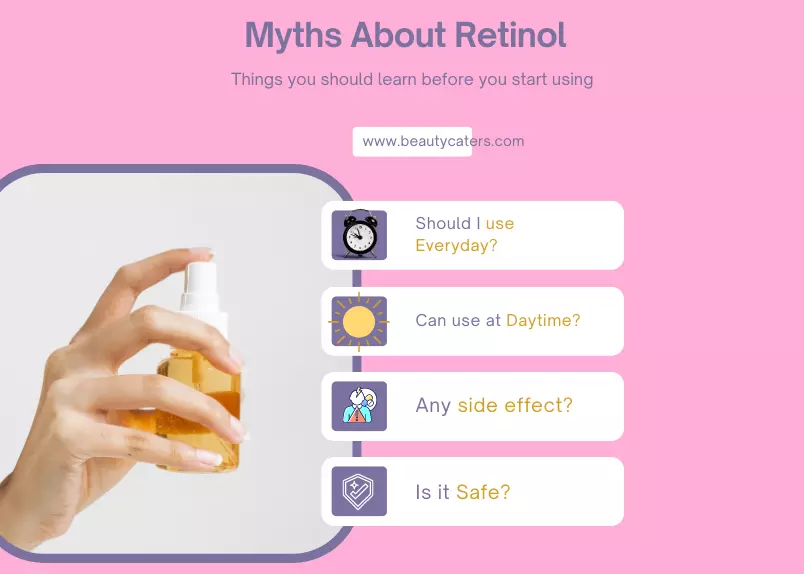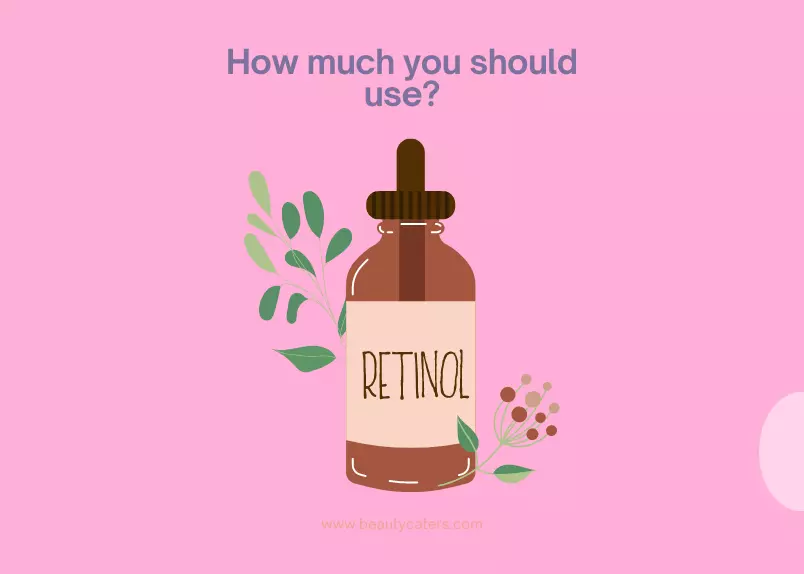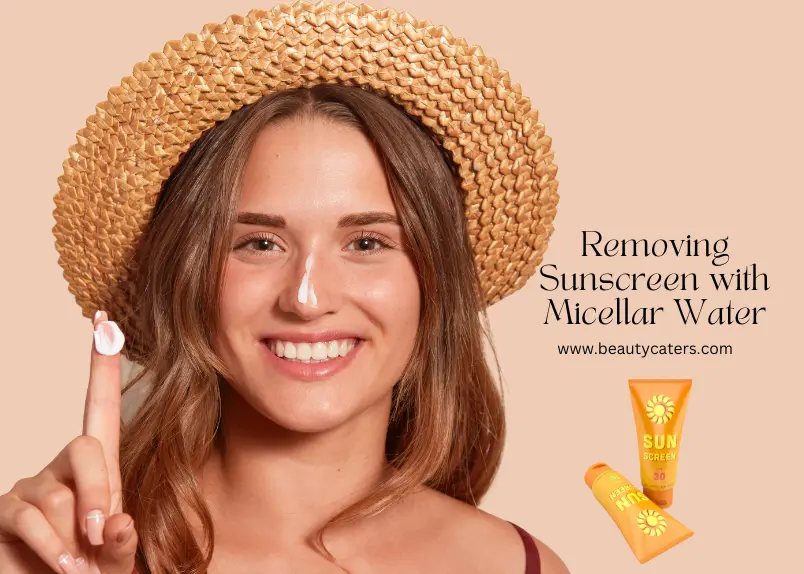Myths About Retinol: Know the Facts
At BeautyCaters, our expert team independently curates every recommended product. Purchases through our links may earn us a commission. Explore our transparent selection process.
Yes, retinol serums are super popular among those trying to combat the signs of aging. But that popularity coupled with the irritation this active ingredient can cause when used improperly has led to a huge amount of misinformation floating around networks and the Internet in general.
Today we are talking about all the common myths about retinol.
What if it always flakes the skin, makes the skin more sensitive to the sun or offers miraculous and instant results? Retinol is a very interesting active ingredient for skin that shows the first signs of aging or is already more advanced, but it doesn’t work miracles and it won’t cause your skin to sag.
What we discussed:
What is retinol?
Retinol is a vitamin A derivative that contributes to cell regeneration. It is the most famous of the retinoids, other vitamin A derivatives with which it shares some similarities, such as isotretinoin or tretinoin.
These ingredients have been proven effective in numerous studies in improving skin texture, treating hyperpigmentation, reducing the appearance of fine lines and wrinkles [1] and even treating acne. [2]
They are able to penetrate into the deeper layers of the skin and stimulate collagen and elastin synthesis.
Some of these retinoids in high percentages can be purchased only by prescription. On the other hand, there are many others with a lower intensity that are available in perfumeries and pharmacies.

Most widespread myths about retinol
Since retinoids are an active ingredient that must be used with certain precautions, a number of myths have arisen that are quite popular among the beauty community. Let’s debunk them one by one.
Myth #1: You have to use retinol every day to see results.
No, you don’t have to use a retinol product every day of the week to start seeing results. What happens is that if you use it more frequently, you will see results much faster.
In fact, after a few applications between two and three times a week is more than enough to notice the beneficial effects of this active ingredient while getting the skin accustomed to its use, without causing too much irritation.
Myth #2: Results are noticeable after a short time
With most retinoid products, results begin to show after a long period of use, ranging from three to six months depending on the type of retinoid and concentration. Over-the-counter products usually take longer to show results than prescription products.
It is important to be patient with the use of products containing actives from this family.

Myth #3: Retinol should not be used in the daytime
You can’t use a product with retinoids during the day because they make the skin more sensitive to the sun – this myth about retinol is very common.
This is one of the biggest myths about retinol that we can hear or read out there. The reality is that yes, we can use retinoids during the day as long as we use a broad-spectrum facial sunscreen with a minimum SPF50 and reapply every two hours.
What happens is that retinol itself is a photosensitive ingredient: this means that it loses its properties if it comes into contact with the sun’s rays. For this reason, it is usually packaged in dark, opaque containers, in the same way that pure vitamin C is.
On the other hand, yes, retinol can cause irritation in some cases, and exposing irritated skin to the sun is not the best idea. But if our skin is already retinized (i.e. already accustomed to the use of retinol), there would not be any kind of problem as long as measures are used to avoid direct and prolonged exposure to the sun.
Hence, if you work in an office and will not be exposed to direct sunlight, you can use it during the day without any problem. If your daily routine includes a lot of sun exposure, it is a better idea to use it at night.

Myth #4: All retinoids are the same
Although retinol as an ingredient is the most popular among all retinoids, there are more actives in this family that work in a similar way.
The retinoid family is composed of several vitamin A-derived actives, which require one or more “transformations” to be converted to retinoic acid on the skin.
Retinol is the best known and most studied, it takes a while to show results but it does the same as retinoic acid [3], that is why it is one of the best choices we can make if we are looking to fight the signs of aging. Plus, we can find it easily in any cosmetic store.
Then we have retinol esters, such as retinyl palmitate, retinyl acetate and retinyl linoleate. They are the ideal choice for beginners in the use of this ingredient, as well as those who have sensitive skin and cannot tolerate it. They provide less dramatic results than retinol, so if you are looking to target the signs of aging they may not be the best long-term option.
Finally, retinoic acid or tretinoin, which has been used for many years to treat acne and skin photoaging, and works much faster than retinol as it does not have to “transform” on the skin.
There is also isotretinoin, which is taken orally to treat acne, and adapalene. Both are prescribed by prescription and under the supervision of a dermatologist.
Myth #5: Retinol is extremely irritating to the skin
There is some truth to this myth, although this potential side effect can be avoided or greatly reduced.
When we first start using retinol, we go through a retinization process. This means that the skin will need a process of acclimatization to this active ingredient to begin to tolerate it. During the first two weeks of use, it is common to experience irritation, flaking or redness.
The good news is that this can be largely avoided if we know how to do it. For example, we can start by using a product that contains a mild retinoid or a low concentration, plus other ingredients that reinforce the barrier function and work to soothe the skin.
If we have opted for a product with stronger retinoids, we can space out the uses a lot over the week so that it does not have as much impact on the skin.
Therefore, it is convenient to know how to introduce retinol into your daily routine to avoid its side effects as much as possible.

Myth #6: Retinol cannot be used with hyaluronic acid
Yes, there are some ingredients whose mixture should be avoided if we want to reduce the possibility of experiencing irritation with this active, such as the use of an exfoliating product containing acids in high concentration together with retinol.
This is not the case with hyaluronic acid, which sometimes accompanies retinol in the formula of many products thanks to its high moisturizing power. So no, there is no problem in using these two active ingredients together. In fact, it is very beneficial.
Myth #7: Retinol should not be applied to the eye area
The eye contour is a particularly sensitive area, but where classic crow’s feet and other wrinkles form. Therefore, you can use retinol in the area, but with caution: moisturize the skin in this area well before and use sunscreen daily.
Myth #8: Retinol is an exfoliant
Despite the fact that it may seem that retinol or retinoids are exfoliating, they are not. Yes, we may see redness, irritation and flaking if we start using them harshly, but this is not caused by exfoliation.
Retinol is an antioxidant ingredient, and its function is to communicate to the skin cells that they should work faster. But in no case do they dissolve or remove dead cells.
Myth #9: The more you apply, the better
This is totally false, with any skincare ingredient. In the case of retinoids, the amount to apply is that of a pea’s worth of product, whether in the form of a gel or cream with retinol.
Myth #10: You can only start using retinol when you already have signs of advanced age
Not true. We can start using retinoids at a much younger age, in fact, isotretinoin or Accutane is used to treat severe acne in young patients.
Even so, the best age to start using retinol is between 25 and 30 years old. From this time on, collagen and elastin production starts to decrease, so it is a good idea to introduce this active ingredient to prevent the signs of skin aging.
If you are in your 20s and are not yet showing fine lines and wrinkles, there is no point in introducing a potentially irritating ingredient like this since your skin’s cell renewal rate is very active.
Hope you this article will solve some of your questions about retinol myths in your skincare. Share your feedback in the comments.










